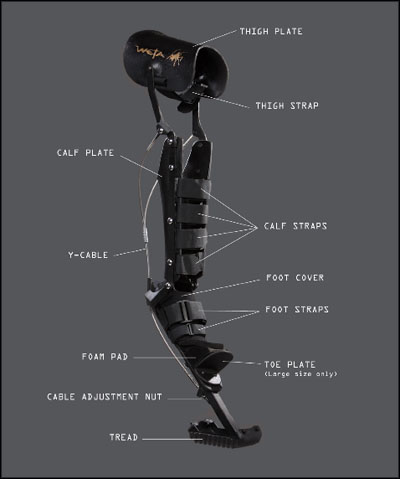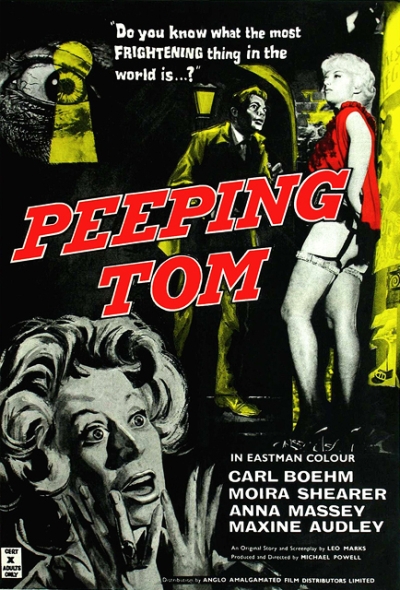Inventor/Sculptor Kim Beaton’s Weta Legs

Kim Beaton and her digitigrade leg extensions. Photo by Dionwrbear.
The booming film industry here in Wellington, New Zealand (a.k.a “Wellywood“) has attracted phenomenal talent from all over the world. Creatives come from as far away as Los Angeles, London, Johannesburg, Vancouver and Tokyo to work on films like District 9, Avatar, and the LotR series. One such transplant is Kim Beaton, a multi-talented artist/inventor from Seattle who was recently hired by Weta Workshop to do conceptual design work on the upcoming Hobbit films.
Kim is a vibrant, intensely focused person who always seems happiest when she has multiple projects in development: large scale sculptures, community arts outreach programs, armor design and production, you name it! She’s also an accomplished inventor. In fact, many of you may already be familiar with one of her patents– last summer, two YouTube videos were posted of Kim striding through downtown Seattle in a pair of startling, stilt-like “reverse leg” extensions. The clips quickly went viral.
Upon arriving here, Kim was encouraged by Richard Taylor (5-time Academy Award winner and co-owner/co-director of the Weta Companies) to continue honing the digilegs’ design in the workshop. After several months of development and fine-tuning, the company is selling Kim’s professional design, now christened Weta Legs, for $945 U.S. dollars a pair. From the official site: “Weta has made many pairs of digitigrade leg extensions in the past for stunt men and creature performers in the movies and on the stage, but this is the first time we can offer [this] leg to anyone.” In fact, it’s the first time any company has put a line of digilegs into mainstream production.
A heads up to performers, costumers, burners, party monsters, cosplayers, designers and filmmakers– this is big. I’ve had the opportunity to test Kim’s prototype myself. They’re incredible. They’re comfortable. They’re FUN. I mean, really, really fun. Watch this instructional video (featuring Kim and a woman who has never been in stilts or extensions of any kind before in her life) to hear and see a bit about why her particular adaptation of the digitigrade concept is so unique and easy to acclimate to wearing.

As far as I know, there’s nothing else remotely like them available on the market. It’s very exciting news for Kim, for her company, and best of all, for all of the non film industry folks out there who can finally own a pair of these. Recently, Kim spoke with me at length about the history of digilegs, as well as her past community collaborations and several other upcoming personal projects. I hope you’ll enjoy getting to know this incredible woman and her work as much as I have.
Please describe the Weta Legs. What sets your invention apart from other kinds of stilts or leg extensions?
They have been called the Holy Grail of costuming. How do you build a device that will give a person the backward leg of a dog or horse? They are referred to by all sorts of names: digilegs, digitigrades, faun legs…
What does digitigrade mean?
A digitigrade is an animal that stands or walks on its digits, or toes. But this is not easy to say unless you like tongue twisters, so it was shortened to “digileg”. They’ve also been called “dog legs” or “reverse stilts”. Originally, we called them leg extensions, because they’re not really stilts, but we want to give them one name that is pretty easy to say. Hence, Weta Legs.












